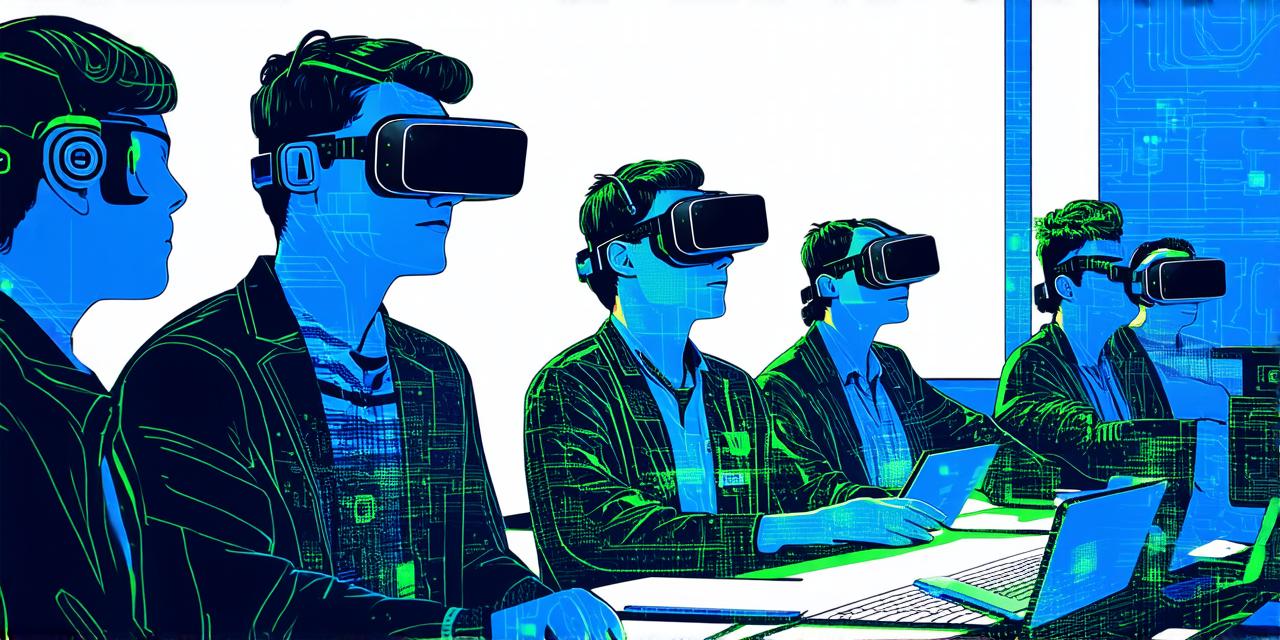Benefits of Virtual Reality in Education
Virtual reality technology offers several advantages for education, including:
- Increased engagement: Students are more likely to be engaged when they are actively participating in a VR experience. This can lead to improved focus, motivation, and retention of information.
- Enhanced learning outcomes: By providing students with immersive and interactive experiences, VR can help them better understand complex concepts and ideas. This can lead to improved academic performance and critical thinking skills.
- Cost-effectiveness: VR technology has the potential to save schools money by reducing the need for physical infrastructure, textbooks, and other resources. Additionally, VR experiences can be reused multiple times, making it an efficient investment in education.
- Personalized learning: VR allows students to learn at their own pace and in their own style, providing a more personalized and effective learning experience.
- Accessibility: Virtual reality technology can make learning accessible to students who may not have access to traditional classroom settings, such as those with disabilities or living in remote areas.
Best Practices for Implementing Virtual Reality in Education
When implementing VR in educational settings, it is important to follow best practices to ensure a successful and effective experience for students. These include:
- Define learning objectives: Before implementing VR technology, educators should define clear learning objectives that align with the curriculum. This will help ensure that the technology is used effectively and that students are gaining the desired outcomes.
- Select appropriate content: Virtual reality experiences should be carefully selected to align with the learning objectives and support student engagement and understanding.
- Provide adequate training: Teachers and students should receive adequate training on how to use VR technology effectively. This will ensure that they are comfortable with the technology and can use it to enhance their learning experiences.
- Create a safe and supportive environment: Virtual reality can be disorienting and potentially disruptive, so it is important to create a safe and supportive environment where students feel comfortable using the technology.
- Integrate VR into existing curriculum: Virtual reality should not be used as a replacement for traditional teaching methods but rather as an addition to them. Educators should integrate VR technology into their existing curriculum in a way that enhances learning outcomes and engages students.
- Monitor and evaluate: It is important to monitor and evaluate the effectiveness of VR technology in educational settings. This will help educators identify areas for improvement and make adjustments as needed.
Potential Challenges of Virtual Reality in Education
While virtual reality technology holds great potential for education, there are also some potential challenges that must be addressed. These include:
- Cost: Implementing VR technology can be expensive, with costs ranging from thousands to millions of dollars depending on the scale and complexity of the project. Schools may struggle to secure funding for VR initiatives.
- Technical issues: VR technology can be complex and prone to technical issues such as hardware failures, software glitches, and connectivity problems. These issues can disrupt learning and cause frustration for students and teachers.
- Accessibility: Virtual reality technology may not be accessible to all students, particularly those with disabilities or living in remote areas. Additionally, some students may not have the necessary technology at home to participate in VR experiences outside of school.
- Teacher training: Teachers may struggle to effectively integrate VR technology into their curriculum or may lack the technical skills needed to use the technology effectively. This can lead to a lack of engagement and reduced learning outcomes.
- Safety concerns: Virtual reality technology can be disorienting and potentially disruptive, raising safety concerns for students and teachers. It is important to ensure that VR experiences are safe and that appropriate safety measures are in place.
Case Studies: Successful Implementation of Virtual Reality in Education
Several schools and organizations have successfully implemented virtual reality technology in educational settings, demonstrating its potential to enhance learning outcomes and engage students. Some notable examples include:
- Discovery VR Classroom: In partnership with Google Expeditions, Discovery VR has created a platform for schools to use virtual reality technology in the classroom. The platform includes a range of immersive experiences that bring classroom learning to life, including virtual field trips and science experiments.
- The VR Lab School: Located in San Francisco, The VR Lab School is a public school that uses virtual reality technology as its primary teaching tool. Students at the school use VR headsets and controllers to experience real-world scenarios such as exploring ancient civilizations or practicing surgical procedures.
- Virtual Field Trips: Some schools have used virtual reality technology to create immersive field trip experiences for students. For example, a school in Washington state took students on a virtual tour of the Great Barrier Reef, allowing them to explore the underwater ecosystem without leaving the classroom.
- The Virtual Reality Classroom: In this classroom, students use VR technology to simulate real-world scenarios such as firefighting or construction. This allows them to learn hands-on skills in a safe and controlled environment.
Summary
Virtual reality technology holds great potential for education, offering increased engagement, enhanced learning outcomes, and personalized learning experiences. However, implementing VR in educational settings requires careful planning, budgeting, and collaboration between educators, administrators, and developers. By following best practices and addressing potential challenges, schools can successfully integrate virtual reality technology into their curriculum and provide a more effective and engaging learning experience for students.
